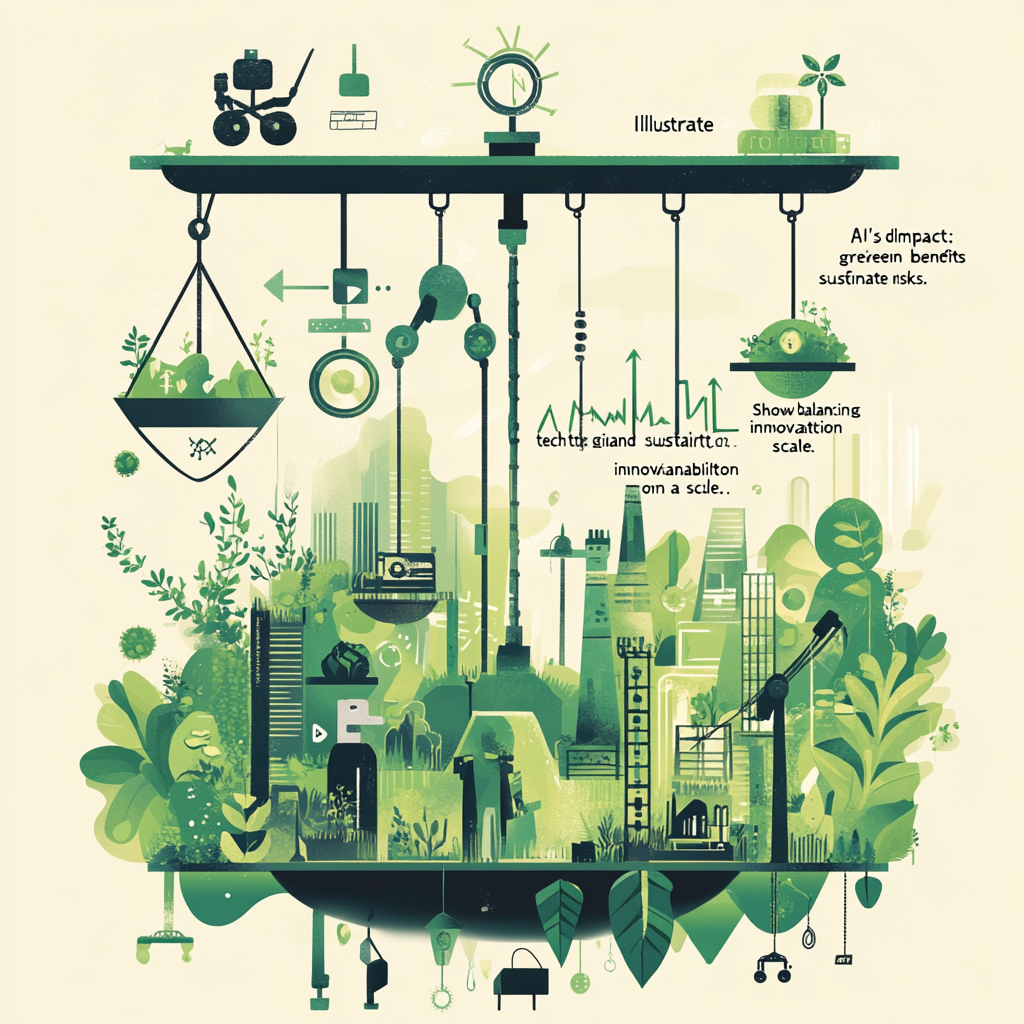
AI Growth vs. Climate Crisis: A Dilemma
Amidst the marvels of the digital age, where artificial intelligence (AI) has crept into nearly every recess of our lives, an inconvenient truth is brewing just under the surface: the emissions soaring from the data centers that power these intelligent systems. It's like a monstrous beast feasting on unchecked energy, and while we bask in the glow of technological advances, Mother Nature can only watch in exasperation. We're not just talking about electric or carbon footprints here; we're delving deep into the pulsating heart of AI's energy hunger, and the grim reality it unleashes on our climate. Buckle up, because this ride dives headfirst into the muddy waters of data-driven emissions and the delightful dichotomy of AI's promises versus its undeniable predicament.
Alright, let’s cut to the chase: AI isn’t just smart; it’s a glutton, an energy gobbler par excellence. Consider this: firing up a sophisticated chatbot like ChatGPT for your queries can gulp down roughly ten times the electricity of a standard Google search. That’s quite the appetite. Think about it! Just one engagement is equivalent to running a light bulb for about twenty minutes. Now, scatter this energy consumption across millions of users relishing the wonders of AI each day, and the picture morphs into a staggering surge of energy use that can hardly be ignored. Imagine a bustling teahouse in the middle of a tea frenzy, but instead of delicious brews, we have monstrous spikes in data consumption, day in and day out.
But hang on—these tech giants—Google, Microsoft, Meta, and Apple—seem to have a penchant for creative storytelling when it comes to their emissions reports. Ever heard of “market-based” emissions accounting? It’s a trick that lets companies wrangle their environmental impact figures through the purchase of Renewable Energy Certificates (RECs). They get to wave a green flag over their activities while still saturating the atmosphere with CO2. It’s a bit like claiming you've offset the calories from monster fries by munching on a carrot stick. While Meta waves about its 273 metric tons of CO2 as the emissions from their data centers, the location-based emissions map tells a different tale—a whopping 3.8 million metric tons! That’s a stunning 19,000 times the original claim, and that, my friends, is not just a small discrepancy; it’s a big, fat tutorial on how to dodge responsibility.
And what’s the overall impact? It’s absolutely massive. The Guardian conducted fresher investigations and discovered that the actual emissions from the data centers of these tech behemoths are around 662% higher than what they officially declare. If these five tech entities were magically transformed into a nation, they’d be ranked 33rd in global emissions, squarely nestled between the Philippines and Algeria. That’s a hall of shame no one really wants a ticket for.
As if we needed another complication, the electric grid is huffing and puffing under the weight of AI’s insatiable appetite. States like California are already feeling the burn, quite literally, as data centers account for about 4% of the nation’s total energy consumption. By 2026, that could sweet-talk its way up to 6%, potentially stirring the cauldron for power shortages and rolling blackouts. Oh joy! But wait, there’s more: data centers also gorge themselves on water. Yes, you heard that right! They siphon millions of liters a day just to keep their expensive electronic toys cool. When heatwaves kick in or droughts loom, it’s as if they’re draining the life out of the local ecosystems just to maintain their digital playgrounds.
In the midst of this murky water, a flicker of hope peeks through, as some tech juggernauts do set ambitious goals for greener practices. Google and Microsoft are tentatively aiming for 24/7 renewable energy operations by 2030. For example, Google has bid farewell to low-quality RECs, setting itself on a promising path. But let’s not pop the champagne yet; the challenge remains daunting. Data centers are exploding in number, and it's projected that more than 7,000 will be milling around the globe, collectively consuming energy akin to an entire country—yes, even a nation like Italy by 2030. So, we’re not out of the woods yet; if anything, we’re just starting to navigate the underbrush.
Now, what’s the game plan here? Can Big Tech reign in its energy cravings? Experts argue that with their seemingly bottomless resources, these companies could indeed work towards slashing their energy consumption. For instance, routing workloads intelligently across the globe to harmonize with renewable sources could make a significant difference without jeopardizing performance. But navigating this course isn’t without hurdles and complexities. It’s a fine line they tread on.
Jesse Dodge, a senior research scientist at the Allen Institute for AI, throws a refreshing perspective into the mix. He theorizes that if companies began to release their AI models more freely, it could eliminate unnecessary redundancies we see today in generative AI processes. Imagine a world where efficiency doesn't just exist as a glossy brochure in a tech firm’s office but becomes an everyday reality. What does this mean for energy and water waste? Simply put, it can lead to significant reductions—not pie-in-the-sky claims, but real, tangible savings that help shift the narrative.
So, as we stand on this precarious precipice, let’s reflect on the double-edged sword of AI. On one hand, it holds the promise to alleviate our pressing environmental concerns, but its current practice is only intensifying the climate crisis. There’s a pressing need for tech companies to lay down the gauntlet for transparency and sustainability in the realm of AI.
We must embrace innovation without sacrificing our planet on its altar. The pursuit of efficiency and convenience through AI shouldn't come at an exorbitant cost to our climate. As we continue to cruise the digital highways paved by artificial intelligence, it’s high time to ensure those paths are aligned with our environmental goals instead of working to derail them.
Want to stay up to date with the latest news on data center emissions and AI's environmental impact? Subscribe to our Telegram channel: @channel_neirotoken

